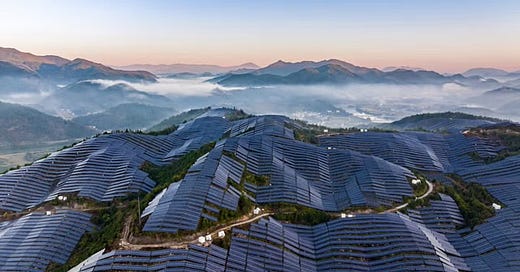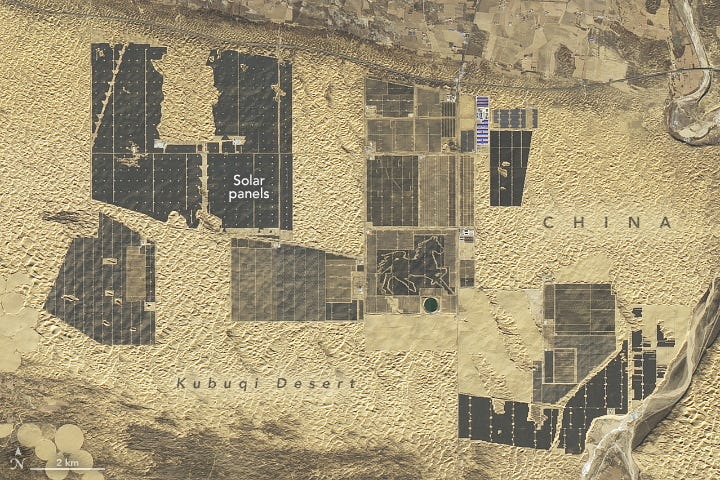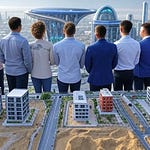To Investors,
I recently remembered a conversation with a colleague of mine who commented that solar energy in South Africa is too crowded, implying that she doesn’t think that she can invest in that space. I understood her sentiment at the time, but I came across some data that shows that she was wrong. The solar energy space in South Africa is not “too crowded” – even with the increasing number of installation service providers, because 1) that would imply that there’s not be enough demand for additional energy in South Africa, and 2) if you compare the amount of solar energy investment happening in the U.S. and in China, you will see that South Africa is adding ZERO solar power by comparison.
Why does solar matter, practically?
The levelized cost of energy for solar is now the same as that of gas and coal (Bloomberg NEF chart 2 below). That means that if a region can overcome purchase and installation costs at scale then energy prices will be the same as that for gas and coal in that region. So the fact that there are an increasing number of solar energy installation providers in South Africa means that the country will fast approach the levelized cost of solar referenced particularly in the second chart below from Bloomberg NEF.
Secondly, let’s all remember that in South Africa we have rolling blackouts which are caused by both deteriorating generation and distribution infrastructure, as well as insufficient diversity in generation sources (because the Independent Power Producer Program is evidence of that). That results in the rolling blackouts (loadshedding) that we’ve worryingly become accustomed to in South Africa.
On top of that, South Africa’s electricity generation capacity has not grown at all, as far back as the data in the chart below from “Our World in Data” shows. For context I’ve compared the total electricity generated for South Africa to that of the U.S., China, the EU, and India.
China produces the most total energy in the world according to the chart above, exceeding 10 000 TWh in 2024, more than twice what the United States produces. But what else do you expect from the world’s manufacturer of everything?
China isn’t stopping there though. From 2022 China has invested billions of dollars into solar energy and has taken their energy production from solar power from 25 TWh a month to nearly 100 TWh a month in just three years. See the chart below which also shows that China’s investment in solar energy went from being below that of nuclear energy, to more than twice their investment in nuclear energy between 2016 to today. By comparison, South Africa’s solar energy production is effectively zero.
For reference, see some examples of the solar projects that China has supported.
Kubuqi Dessert
Before
After - “the project, expected to be finished in 2030, will be 400 kilometers (250 miles) long, 5 kilometers (3 miles) wide, and achieve a maximum generating capacity of 100 gigawatts.”
Huainan Solar farm
Mount Taihang
In case that wasn't enough, PV Magazine reported last week that Chinese solar manufacturer Longi unveiled a new PV design that has 25.9% efficiency, meaning that the new design can convert more sunlight into electricity than most panels available today, which average around 23% efficiency. China is taking solar energy very seriously!
This breakthrough could lead to more power from less space because you can generate more electricity with fewer panels – saving land or roof space, lower costs over time because higher efficiency will reduce the number of panels needed – potentially cutting installation and maintenance costs, and if they can make it affordable and scalable; it could speed up the switch to solar power worldwide.
So again, the solar energy space in South Africa is far from "crowded". Remember the goal is to get to energy abundance in South Africa because energy abundance would allow for more industrial activity with lower startup then maintenance costs. The continuous global innovation and investment in solar energy will continue to naturally reduce the cost of solar energy, it just takes will from the political spheres to support the source in South Africa.
Putting aside the media noise and propaganda about China, if the world’s manufacturer sees investment in solar energy as essential to their energy mix and to maintain their ever-growing economic machine, who are we to ignore solar energy investment?
On my journey to becoming a master capital allocator, one lesson down, a billion more to go.
I hope you all have a great day
-Mansa
🚨READER NOTE: I launched the Self-Taught MBA podcast last week, where I’ll document my effort to learn from the smartest and most interesting people in the world, on my journey to becoming a master capital allocator. It would mean the world to me if you follow the show on Spotify and Apple Podcasts (links below) and tell your friends and family about the podcast. Thank you for your support!



















Share this post